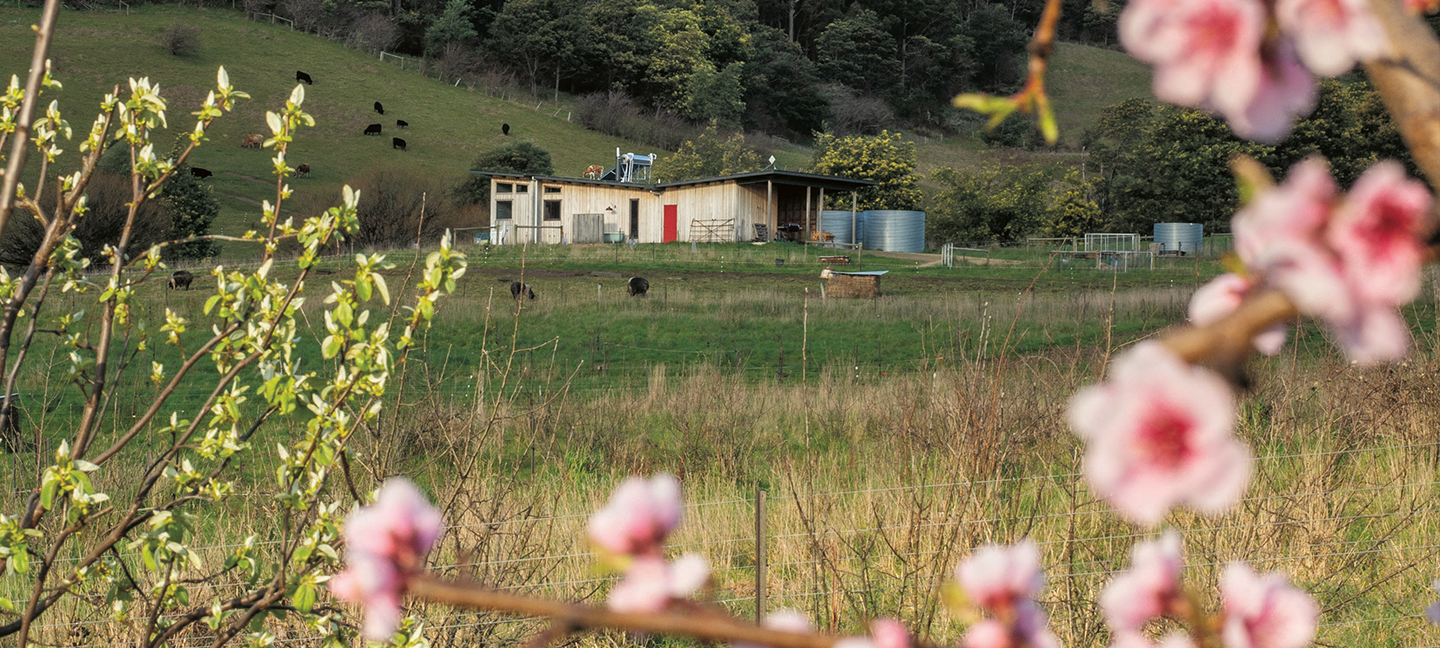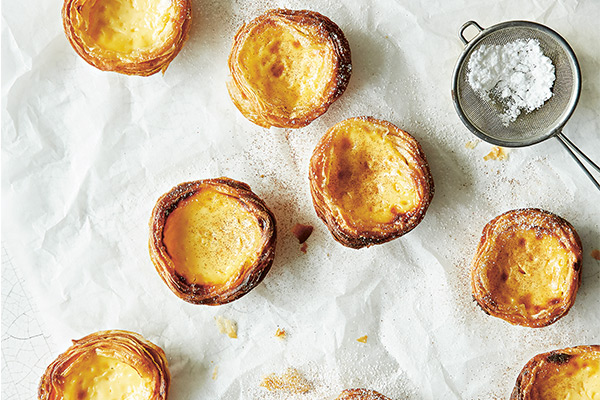Spring Garlic and Spinach Tart
21 Aug 2020 | Matthew Evans
Matthew Evans captures Spring in The Commons in the most beautiful way, while sharing recipes that are not only delicious, but also seasonal.
It seems like it’ll never come. In the midst of a Tassie winter, spring seems too far off. In our little corner of the world, spring seeps into being. The first hints are in early September, but you’re never quite sure it’ll arrive until late in the month.
You can tell what time someone left the house in spring. Are they wearing an overcoat, a sunhat, a rain jacket or shorts? Spring can be frosty, or even sprinkle a little snow on occasion. But it can also be over 30°C, perhaps even the day after it has snowed. The weather berates us for not wearing enough or too much. It toys with us. The wind awaits our complacency, and the promise of warmth one day can be dashed with an icy blast the next. The cosseting of winter makes way for the unpredictability and excitement of spring. There’s the promise of new life as plants surge forth with young growth, and blossoms unfurl and the insect population explodes.
Spring means the chooks are back on the lay, after the recharge of their annual moult. The cows calve. Spring milk is loaded with golden-coloured cream. Goats have their kids in spring, too. New chicks crack open their shells and the cycle of life turns again. Spring lamb is born in spring, named after the season that bore it, not the season you eat it in. We do, however, eat lamb at this time of year, even if it should be called hogget or two tooth: sheep that are over a year old. We like them that way; they’ve better flavour.
The soil is starting to warm after the long hibernation of winter. Seeds that wouldn’t germinate in winter now have a chance to shoot. And while everything grows, there’s actually a moment where there’s not the usual abundance.
Despite the fecundity, the green, growing gloriousness of this time of year, we call parts of spring, the later parts, ‘the hungry patch’ because the garden is growing but not yielding. The crops are fattening, but aren’t yet ready to harvest. Though perhaps ‘hungry patch’ is a misnomer. Thanks to 200 asparagus plants, and judicious winter plantings, we never actually go hungry. The variety of crops is, no doubt, lower than the heady days of summer, but there’s still variety. If anything, it’s more fun in the kitchen, finding new ways with the staples. A turnip pasty, perhaps? Our very own polenta from our stone-ground corn? A spring risotto using whatever is good on the day? Broad beans? (You know you can eat the whole pod if you get them at the right time, and cook them the right way.)
As the season ends, we get strong hints of summer. A ripe strawberry or two. Peas, sugar snaps, the first glimpse of fat gooseberries, though they’re still so sour they make your whole body pucker. The elder trees that adorn neighbours’ land, however, are fat with umbels, ready for the picking. The umbels are made up of hundreds of tiny blossoms, each one sweetly scented. We scale ladders and fill baskets with elderflowers, as many as we can in the short-but-prolific season, ready to make a delightfully fragrant cordial that will last the summer long.
Spring Garlic and Spinach Tart

| INGREDIENTS Salad, to serve Pastry 150 g (5½ oz) butter, chilled and diced Filling 1 tablespoon olive oil |
METHOD For the pastry, rub the butter into the flour and salt until it resembles breadcrumbs (or you can pulse it in a food processor). Add the yoghurt and enough ice-cold water to make a soft dough, kneading until just combined. Rest for 30 minutes, then roll out to fit a 20 cm × 6 cm (8 in × 2½ in) tin. Rest for another 30 minutes. Preheat the oven to 180°C (350°F) and blind-bake the pastry (see Note on page 109). To make the filling, heat the oil in a pretty big frying pan over a low heat and gently fry the garlic until it’s yieldingly soft. Add the spinach and cook, stirring often, until wilted. (Popping a lid on can speed up this process.) Spread the garlic and spinach evenly over the base of the tart case. If you like, return the pan to the heat and reduce any runny cooking juices before adding to the tart. Beat the yolks, add the sour cream and beat until just combined. Season with pepper and a little salt, remembering that the cheese is salty. Stir in three-quarters of the cheese and carefully pour this egg mixture into the tart case to fill. Top with a little more cheese. Reheat the oven to 180°C (350°F) and bake for 12–15 minutes, or until the egg mixture has set. Serve the tart warm or at room temperature, with salad. |
This recipe is extracted from The Commons by Matthew Evans
Available now at bookstores and online
Click here to find your preferred online retailer




